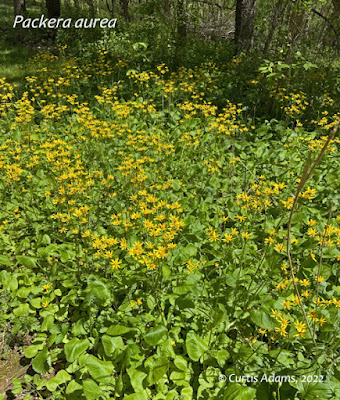As I think about the landscapes that I have idealized from an early age, they are green and full of life all year long. But I grew up in an area that did not have four seasons and at a time when droughts and water management were not something that we worried about. So the expectation of having some sort of green ground cover 365 days a year was not difficult to achieve. Now after living in the Northern half of the US for 40 some years I have come to realize that having four seasons means that there is a good chunk of time when the plants in the landscape take a break and rest.
 |
| Vinca minor is a widely used and invasive groundcover, originally from central and southern Europe, that is often used where an evergreen carpet is desired. |
 |
| English ivy forms a dense evergreen cover that spreads by both runners and seeds. It is particularly damaging when it is allowed to climb trees. |
This brings up a question, does all the ground need to be covered all the time? Yes, for protection from erosion, extreme temperature fluctuations and evaporation coverage is beneficial. Groundcovers, both living and dead, also provide wildlife habitat. There has been increasing awareness of the importance of providing habitat for overwintering insects as they are critical sources of food for birds and other predators.
 |
| Alleghany spurge, Pachysandra procumbens, native to the mountains of the Southeast, acts as a more naturalistic groundcover. |
Does it need to be green all the time? No, not really. But there is a desire among many for a lush green ground covering year around. This desire is' might I say, for primarily aesthetic reasons. To get this year-round green in temperate climates many folks are drawn to non-native species like Japanese pachysandra, English ivy, Vinca minor , yellow archangel (Lamiastrum galeobdolon), wintercreeper euonymus, mondo grass and lilyturf. Most of these species are invasive in many parts of North America.
Here's my listing of the importance of having a ground cover, roughly in order of importance:
Minimize Erosion by holding soil against the forces of rain and wind;
Water management, by improving water infiltration and reducing evaporation;
Soil Health, by avoiding compaction, maintaining good aeration, moderation temperature and moisture extremes. All these help maintain a healthy soil microbiota;
Maintain ecology by providing places for native insects to overwinter, less disturbance provides better survival rates for overwintering insects and nesting sites;
Weed management, its harder for seeds to geminate on shaded soil, in competition with established plants or where roots cannot take hold; and,
Aesthetics, create a visually pleasing composition.
As I alluded to above, the ground cover does not need to be green and growing year round. In fact, depending on the climate and the environment the most appropriate ground cover may not be green at all.
In the majority of cases the material covering the ground will be some sort of plant material. Having a actively growing root network under the soil to stabilize it and keep it biologically active is the ultimate goal. Where climate and conditions allow having a living mulch is an ideal solution for protecting the ground. The plants making up this living mulch need not be green though all four seasons. They just need to continue to to hold the soil in place. Green and actively growing on top is nice but not a year-round necessity.
The following are descriptions of how natural groundcovers function in three habitats that are similar to what you might encounter in a residential setting: Woodlands, Grasslands, and Deserts.
 |
| Mayapples, Podophyllum peltatum, provide a dense cover throughout the spring as the forest canopy leafs out. They hold the soil with a wide spreading network of rhizomes. |
 |
| Little bluestem, Schizachyrium scoparium, is a common component of many eastern grasslands and dry meadows. Even after it dies back in winter it maintains its visual appeal. |
 |
| The ocotillo and purple-tinged prickly pear cactus each have shallow wide-spreading roots to scavenge water thus limiting what else can grow nearby. |
If green in winter is really what you need there are several native species here in the Mid-Atlantic that fit the bill. Native (near)evergreens include, wintergreen (Gaultheria procumbens), green and gold (Chrysogonum virginianum), heuchera, tiarella, Alleghany spurge (Pachysandra procumbens), golden groundsel (Packera aurea), evergreen ferns (Christmas and intermediate wood ferns) and some sedges, like creeping sedge (Carex laxiculmis) are good for partly shaded locations. For sunnier sites moss phlox (Phlox subulata), wild strawberry (Fragaria virginiana), common and creeping junipers, barren strawberry (Geum ternatum), as well as some grass-like plants like prickly bog sedge (Carex howei). On most sites these plants will still be green through most of the winter, but they generally will not be lush with fresh foliage
 |
| Golden groundsel in winter. The interconnected leaf rosettes are held close to the soil. |
 |
| In spring golden groundsel puts on fresh growth and sends up flowers. |






